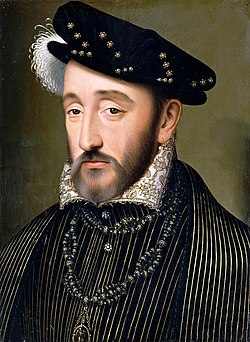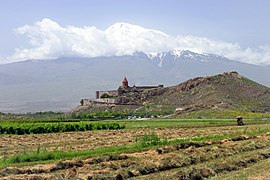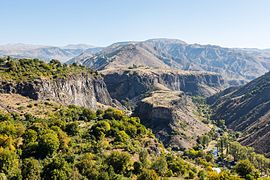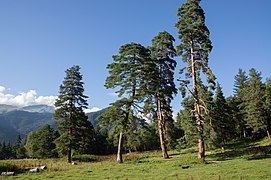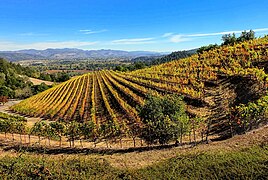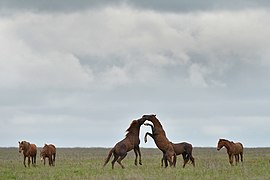Vasroderno: Difference between revisions
Slovertia12 (talk | contribs) No edit summary |
Slovertia12 (talk | contribs) |
||
| (42 intermediate revisions by the same user not shown) | |||
| Line 1: | Line 1: | ||
{{WIP}} | {{WIP}} | ||
{{Nation_icon_Vasroderno}} | |||
{{Infobox country | {{Infobox country | ||
|micronation = | |micronation = | ||
| Line 12: | Line 13: | ||
|alt_flag2 = | |alt_flag2 = | ||
|flag2_border = | |flag2_border = | ||
|image_coat = | |image_coat = Vasroderno Seal.png | ||
|alt_coat = | |alt_coat = | ||
|symbol_type = | |symbol_type = | ||
| Line 22: | Line 23: | ||
|other_symbol_type = | |other_symbol_type = | ||
|other_symbol = | |other_symbol = | ||
|image_map = | |image_map =[[file:Vasroderno map.png|190px]] | ||
|loctext = | |loctext = | ||
|alt_map = | |alt_map = | ||
|map_caption = | |map_caption = Vasroderno (Green) spanning the continents of Ealios and Gerania | ||
|image_map2 = | |image_map2 = | ||
|alt_map2 = | |alt_map2 = | ||
| Line 62: | Line 63: | ||
|sovereignty_note = | |sovereignty_note = | ||
|established_event1 = Foundation of Kingdom of Vasroderno | |established_event1 = Foundation of Kingdom of Vasroderno | ||
|established_date1 = | |established_date1 = 420 | ||
|established_event2 = Expansion Period | |established_event2 = Expansion Period | ||
|established_date2 = 1240- | |established_date2 = 1240-1490 | ||
|established_event3 = Republic | |established_event3 = Republic | ||
|established_date3 = 1560 | |established_date3 = 1560 | ||
| Line 134: | Line 135: | ||
}} | }} | ||
Vasroderno is a country and {{Wp|unitary state|unitary}} {{Wp|parliamentary system|parliamentary}} {{Wp|Constitutional monarchy}}. It reaches from the Dromorian Mountains in the north to the Jurdos Steppe in the south, the Sea of Buroz in the south west and the Ovardic Ocean in the north east. The city of [[Vasroderno City|Vasroderno]] is the largest city and capital it is also known as the imperial city owing to its position as the seat of government and the monarchy. Other major cities include Provarica in the south west, Bovorico in the | Vasroderno is a country and {{Wp|unitary state|unitary}} {{Wp|parliamentary system|parliamentary}} {{Wp|Constitutional monarchy}}. It reaches from the Dromorian Mountains in the north to the Jurdos Steppe in the south, the Sea of Buroz in the south west and the Ovardic Ocean in the north east. The city of [[Vasroderno City|Vasroderno]] is the largest city and capital it is also known as the imperial city owing to its position as the seat of government and the monarchy. Other major cities include Provarica in the south west, Bovorico in the south, Eapondora, Dalkosa and Gadarinivo. The empire is split into three levels of subdivison. The first level consists of 20 Pramori, 55 Daloci which the Pramori are split into and which are primarily for electoral purposes and 320 Terosi which were the old traditional Daloci subdivisions before they were significantly reformed. | ||
The constitutional monarch of the empire is Voldarna III, the role of the [[Emperor of Vasroderno]] has been constitutional since 1863 after the unification of the empire under Urus the Great following the Great Schism of 1819. The Emperor serves as {{wp|Head of state}}. The {{wp|Head of government}} of the nation is the [[Prime Minister of Vasroderno|Prime Minister]] who is the leader of the largest party in the lower house of the [[Senate of Vasroderno]] to which elections are held every four years. | The constitutional monarch of the empire is Voldarna III, the role of the [[Emperor of Vasroderno]] has been constitutional since 1863 after the unification of the empire under Urus the Great following the Great Schism of 1819. The Emperor serves as {{wp|Head of state}}. The {{wp|Head of government}} of the nation is the [[Prime Minister of Vasroderno|Prime Minister]] who is the leader of the largest party in the lower house of the [[Senate of Vasroderno]] to which elections are held every four years. | ||
| Line 140: | Line 141: | ||
Vasroderno is a highly developed country renowned for its beautiful geography, its rich cultural legacy and history as well as its art, architecture and imprint on the history of the world and its presence on the global stage. It is one of the world’s largest political and military powers and has a considerable GDP as well as we’ll developed state welfare services and programs. | Vasroderno is a highly developed country renowned for its beautiful geography, its rich cultural legacy and history as well as its art, architecture and imprint on the history of the world and its presence on the global stage. It is one of the world’s largest political and military powers and has a considerable GDP as well as we’ll developed state welfare services and programs. | ||
==History== | |||
===Pre and Ancient History=== | |||
Stone tools and weapons have been discovered in Eapondara which dictate that the area around the Sea of Buroz has been inhabited for at least one and a half million years. What is now known as lesser Vasroderno or the region reaching from the coastline of the Sea of Buroz to the Dromorian mountains was known to early civilisations such as the Vasrenii and Eapondorii and Vasrenica. There were numerous settlements along the Buroz coast. | |||
The Eapondorics expanded across both the northern and southern shores of the Sea of Buroz establishing cities. To the north across the Dromorians what is today within the territory of Vasroderno was inhabited by several tribes known to Eapondarics as the Novi and Clericin people's who settled just north of what is known as Lesser Vasroderno on the Urodia plain who spoke a language closely realted to modern day Urodic. Westward towards the Adrascal Mountains what is now Vasroderno was sparseely inhabited by tribes and cultures of the Orvadeni people's. | |||
===First Vasronic Kingdom=== | |||
[[File:Arras 6.jpg|thumb|right|A tapestry depicting the Dromorians made in the 1500s representing the time of King Arud II]] | |||
Huge changes were made in 420 when the lands south of the Dromorians were united under the conquest of King Arud II, this period is known as the Arudic conquest and established the kingdom of Dermori which reached its greatest extent in 812 with the coronation of Povari, soon after this the city of Eapondora was sacked by the Jurics of the north and Povari fled west and inland founding a new seat of his power Vasronici which would become the modern capital Vasroderno which lends it's name to the entire empire. Soon after under his rule his armies would expand beyond the Dromorians into what in modern times is referred to as Urodia where he came into conflict and swiftly conquered the Clericins and Novins there. | |||
After the death of Povari his kingdom splintered into 5 smaller kingdoms. Multiple wars were fought between them in the ensuing vacumn of power, all fighting for Vasrenici and claiming to be his legitimate successor. | |||
Eventually the victor in this prelonged and brutal conflict was Haeco who overcame the other four and sieged and won the city of Vasronici in 987. He established the accepted royal line of the Varodernic lands and waged brutal campaigns against his enemies follwed by his son's all named after him which created the first Haeconic dynasty which would rule the country for the next three centuries. | |||
In the 1300s the kingdom ecame increasingly centralised, during this time the nation became known as Vasroderno. This period is known as 'the long peace' where trade across the Buroz and amicable relations with the Haeconic dynasty and it's neighbours on it's friges. In 1387 a coalition of forces from the northern Adrascian lands swept down towards Vasroderno aiming to annex the city and the valuable lands around the Buroz coast and Urodia valleys. Haeco VII raised a huge army to meet them in the north where after a series of long and bloody battles he wwas victorious and the following treaty of Gadarinivo in 1389 established the boundary line between the kingdom and those to the north. | |||
===Early Modern Period=== | |||
By the mid 1400s the land controlled by the Vasrodernic monarch stretched out to the Ovardic Ocean where the new city of Dalkosa had been founded as a trading hub in 1433, to the Sea of Buroz and the ancient heartland of the nation as well as far east as the Urodia mountain and the full extent of the Dromorian ranges. This encapsulated nearly 20 million people. In 1490 the Pramori system was established and Porvums were created across the realm to better lead local government. During this time the Vasrodernic language was standardised and local dialects as well as other tongues such as Urodic and Dromorian saw state sponsored persecution where the idea of distinct Vasrodernic culture and national identity became more common over a century long period from 1490-1600 and Vasrodernification became a state practice. | |||
===Republic=== | |||
[[File:Henry II of France..jpg|250px|thumb|left|King Haeco VIII]] | |||
In 1551 Haeco VIII died of an unexplained illness, with no heir to the throne the insuing power vacuumn had an irreversable impact on the nation. As the kingdom splintered with the Haeconic dynasty having no clear successor a group known as the Porvumists who took their name from the local governments in the provinces began to raise forces carrying the message that the nation no longer needed to be led by a monarch. They soon took over regional Porvums around the nation and raised militias that marched to Vasroderno, setting up what was known as the''Central Porvum'' in the city of Vasroderno and waging a campaign of terror against rival royalist forces who attempted on several occasions to raise support to reinstate the monarchy. The Republic of Vasroderno was procalimed on the 12th of September 1560. In 1571 the Central Porvum buildings in the city were completed, today they are the site of the National Senate containing the Noble Council ad the Representative Council. | |||
===Civil War=== | |||
In 1632 after nearly a century of the republic the nation was again in chaos as rival fractions in the Central Porvum struggled for power and distant relatives of the old Haeconic dynasty the house of Voldar was beginning to win support in the provinces for a return to monarchy with a promise of a more stable government. Regimes in the republic had been short lived and often chaotic with the whiplash from various different policies being disastrous for the economy. This tension between the Voldars and the Central Porvum came to a head in Dalkosa in 1632 when the city was ransacked by forces sympathtic to the restoration of the monarchy. The Republic was ill prepared and lost ground swiftly as when its losses became more pronounced in size multitudes of the republican army deserted and joined the royalist cause. The Civil War lasted only two years before the republic fell and Vosin I took the seat of power in the capital declaring himself not King of the Vasrodernics but Emperor. | |||
===First Empire and Northward Expansion=== | |||
[[File:Горные кедры 100 х165 см. х.м..jpg|250px|thumb|right|A depiction of the Adrascal mountains from 1777]] | |||
Under Vosin I the new empire earned it's title, his armies expanded swiftly westward toward the Adrascal mountains conquering them in a matter of 5 years before turning southward towards the Juros Steppe where after campiagns against the Ovronicans in the south lwed to the nation now spanning two continents. Vasrodernification continued as the language of the nation was spread throughout the empire and the rise and swift expansion under Vosin created a fervent nationalism that led to a sustained period of economic, cultural and scientific progression known as ''The Great Enlightenment'' although an autocratic regime Vosin's 65 year reign was advanced in the fact that under him was crated the Noble Council who at their beginning were able to summon the emperor as the people's representatives so that he could hear important matters. After Vosin's death his three sons ruled consecutively with lengthy reigns up until the late 1700s until their deaths when they were succeeded by their nephew Aronica in 1799. | |||
Aronica became increasingly unpopular during his reign, Under Vosin III who ruled from 1767-1799 the Representative Council was established to take the old role that the Noble Council was originally founded for as the noble council had simply become a chamber dominated by the aristocracy and Vosin wanted to ensure that the people would not revolt like under his brother and so reestablished theor voice in the Imperial heartland. However this incredibly popular council was dissolved by Aronica in 1810 as he was a firm believer in Autocracy and saw the Council as restrictive and burdonsome. The outrage that this cause would lead to the great schism of 1819. | |||
===The Great Schism=== | |||
[[File:Alexandre Soldé Gefecht 1886.jpg|250px|thumb|left|Bovoric and Aronic forces clash during the great schism]] | |||
Opponents to Aronica's rule built up their forces against him between 1810 and 1819, the ensuing conflict led to Aronica taking control of the eastern portion of the empire whilst the west widely made up of people's that supported a more direct voice in the city revolted against him and set up a rival empire with it's cpital in Bovorico it is thus known as the Bovoric Empire. Conflicts between it's emperor Voldarna I. | |||
===Reunification=== | |||
===Civil War of 1928=== | |||
===Republic=== | |||
===Jardovian Coup=== | |||
===Dictatorship 1933-1958=== | |||
===Modern Day=== | |||
==Geography== | |||
<gallery mode=packed heights=120px> | |||
File:2014 Prowincja Ararat, Widok na Wielki Ararat i klasztor Chor Wirap (04).jpg|Eapondara Pramori | |||
File:Valle de Garni, Armenia, 2016-10-02, DD 04.jpg|The Dromorian mountains | |||
File:Arkhyz, Karachay-Cherkessia, Taulu, Trees.jpg|Middle Vasroderno | |||
File:Ijevan vineyards.jpg|Vineyards on the Buroz coast | |||
File:Wild horses in Rostovsky nature reserve.jpg|Wild horses on the Juros Steppe | |||
</gallery> | |||
Vasroderno can be split into several different geographic regions. In the south east lies the warm coast of the Sea of Buroz in which lies a coastal plain traversed by wide rivers and further inland gives way to rolling hills covered in dense {{wp|Mediterranean forests, woodlands, and scrub|forests, woodlands, and scrub}} as well as valleys and wide rivers. This rises to form the Dromorian mountain range which runs from the north east to the centre of the country like a spine sheltering the vast Urodia plain in the centre of the country. The centre of the country contains dense forest and a variety of warm dry forests and the lush plains of the Uro river and its tributaries. Further west the largest and highest mountain range the Aradascal mountains stretch in a bowl towards the Ovardic Ocean with large wide slopes and peaks where the highest peak in the country Mount Orilia (6,002m) and beautiful varied and spectacular scenery to the south of this lies a semi arid steppe which stretches towards the empire’s south western border. Species native to Vasroderno include {{wp|Bison}}, {{wp|Wolf|Wolves}}, {{wp|Elk}} and {{wp|Golden eagle|Golden eagles}} being amongst the most numerous examples of Vasrodernic fauna. | |||
===Climate=== | |||
The climate of Vasroderno is diverse and highly varied and is influenced heavily by both the Sea of Buroz in the south and the Ovradic Ocean in the north. In the south the Sea of Buroz creates a climate of {{wp|Heat}} and {{wp|Humidity}} giving the regions of the south a {{wp|Mediterranean climate}}. Further inland the Drmorian mountains have an {{wp|Alpine climate}} with a significantly colder climate. This climate is also seen further west at the Adrascal mountains. In the country's centre the land following the Dromorians is of a {{wp|Humid continental climate}} with warm summers typically consisting of temperatures of 21–28 °C whilst winters are significantly colder at around −3 °C or far below it. South of the Adrascal mountains in the very south west of the country lies an area of {{wp|Semi-arid climate|cold semi arid land}} known as the Juros steppe. | |||
===Subdivisions=== | |||
Subdivisions in Vasroderno are split into three levels. Firstly the empire is divided into Pramori (Provinces) these are then divided into Daloci (Municipalities) which are further divided into Terosi (Districts). Cities with a population of over one million have their own seperate administrative status as Imperial Cities which are not to be confused for the nickname of the capital of the empire and the country's namesake. Current Pramori boundaries were introduced after significant reform following the reunification of Vasroderno in 1863. There are currently 20 Pramori. Each Pramori has a governor appointed by the Emperor chosen by the central government. These appointments are made based on democratic elections held within the Pramori. In addition to the governor each Pramori has a unicameral legislature called a ''Porvum'' made up of in less populated Pramori as little as 35 members and in more populated ones as many as 100. | |||
Below the Pramori are Daloci. The number of Daloci per Pramori ranges based on population from 10 to 40. Daloci have small executives which oversee local matters and administration. The majority of Daloci are rural however certain cities in the empire have status similar if not identical to that if a Daloci. There are 7 of these cities which are goven this status based on several factors such as cultural or historical significance, population or economic status. | |||
Daloci are further split into Terosi which number 320 these are simply local communities like villages or towns headed by local ''Procari'' and are mostly used for the purpose of Pramori elections or national [[Senate of Vasroderno|senate]] elections. | |||
==Politics and government== | |||
Vasroderno is a {{Wp|Unitary State|Unitary}} {{Wp|Parliamentary State|parliamentary}} {{Wp|Constitutional monarchy}} within the framework of a {{wp|Representative democracy}}. The legislative branch of it's government consists of the bicameral legislature of the Vasrodernic [[Senate of Vasroderno|Senate]]. The lower house, the Representative Council is elected democratically through a system of {{wp|Proportional representation}} every four years and it's responsibility is to propose and pass legislation voted for by it's 327 members. Representatives are tied to Terosi the third level of Vasrodernic subdivision with some extra seats for Imperial cities with high populations. Members are elected through universal suffrage. The Noble Council is the upper house of the Senate of Vasroderno. Somewhat controversially its members are not elected but appointed. Five "Nobles" are elected by each Pramori Porvum in special elections which take place throughout an election year amongst members of the four largest [[Political Parties in Vasroderno]], this means that Nobles in the Noble Council are tied to a party the are just not elected directly through the people but through a Porvum. This creates a total of 60 Nobles across the empire, a further 20 are personally appointed by the Emperor and are known as 'Nobkes by Imperial Appointment'. The unelected status of these particular officials has been somewhat controversial with there being a growing campaign within the country to reform or abolish the upper house or abolish the 20 imperially appointed officials and directly elect the 60 elected via Porvum. | |||
The {{wp|Head of state}} of Vasroderno is the [[Emperor of Vasroderno]] (currently Voldarna III). The Emperor is a constitutional monarch. This constitutional role was established following the reunification of the country in 1863, prior to this the Emperor's unlimited powers caused the great schsim of 1819 which saw the Empire splinter into several different territories. Today the emperor performs a much more ceremonial role where the role is now seen more as an office of a national symbol and they exercise duties with complete political neutrality. Apart from being able to appoint ministers to the Noble Council who are all independents there are a few roles still held by the emperor such as the refusal to dissolve the senate and the appointment/dismissal of the Prime Minister or to command the armed forces of Vasroderno. The leader of the largest party or coalition in the Representative Council becomes the [[Prime Minister of Vasroderno]] the {{wp|Head of government}} of the Empire. The Prime Minister is answerable to the Representative Chamber and is responsible for the policies and decisions of the government. | |||
===Foreign relations=== | |||
===Military=== | |||
==Economy== | |||
===Transport and infrastructure=== | |||
===Energy=== | |||
==Demographics== | |||
===Religion=== | |||
===Language=== | |||
==Education== | |||
==Health== | |||
==Culture== | |||
===Cuisine=== | |||
===Literature=== | |||
===Media=== | |||
===Sport=== | |||
===Holidays=== | |||
{{Vasroderno Topics}} | |||
[[Category:Vasroderno]] | [[Category:Vasroderno]] | ||
Latest revision as of 10:27, 17 January 2024
This article is incomplete because it is pending further input from participants, or it is a work-in-progress by one author. Please comment on this article's talk page to share your input, comments and questions. Note: To contribute to this article, you may need to seek help from the author(s) of this page. |
The Empire of Vasroderno Imperus Vasrodernica | |
|---|---|
| Motto: "Arus Vorde Fortas" "Work Garners Strength" | |
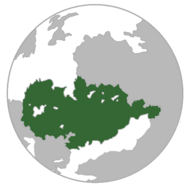 Vasroderno (Green) spanning the continents of Ealios and Gerania | |
| Capital and largest city | Vasroderno |
| Recognised national languages | Vasrodernic |
| Recognised regional languages | Various |
| Demonym(s) | Vasrodernic |
| Government | Unitary parliamentary Constitutional monarchy |
• Emperor | Voldarna III |
| Aleksander Moras | |
| Legislature | Senate |
| Noble Council | |
| Representative Council | |
| Establishment | |
• Foundation of Kingdom of Vasroderno | 420 |
• Expansion Period | 1240-1490 |
• Republic | 1560 |
• Civil War | 1632 |
• Empire & Northward Conquest | 1632-1701 |
• Great Schism | 1819 |
• Unification | 1863 |
| Population | |
• 2023 estimate | 88,990,734 |
| GDP (nominal) | 2023 estimate |
• Total | $22 trillion |
• Per capita | $78,000 |
| HDI (2023) | 0.92 very high |
| Currency | Vasrodernic Dolnur (VAD) |
| Driving side | right |
| ISO 3166 code | VAS |
| Internet TLD | .va |
Vasroderno is a country and unitary parliamentary Constitutional monarchy. It reaches from the Dromorian Mountains in the north to the Jurdos Steppe in the south, the Sea of Buroz in the south west and the Ovardic Ocean in the north east. The city of Vasroderno is the largest city and capital it is also known as the imperial city owing to its position as the seat of government and the monarchy. Other major cities include Provarica in the south west, Bovorico in the south, Eapondora, Dalkosa and Gadarinivo. The empire is split into three levels of subdivison. The first level consists of 20 Pramori, 55 Daloci which the Pramori are split into and which are primarily for electoral purposes and 320 Terosi which were the old traditional Daloci subdivisions before they were significantly reformed.
The constitutional monarch of the empire is Voldarna III, the role of the Emperor of Vasroderno has been constitutional since 1863 after the unification of the empire under Urus the Great following the Great Schism of 1819. The Emperor serves as Head of state. The Head of government of the nation is the Prime Minister who is the leader of the largest party in the lower house of the Senate of Vasroderno to which elections are held every four years.
Vasroderno is a highly developed country renowned for its beautiful geography, its rich cultural legacy and history as well as its art, architecture and imprint on the history of the world and its presence on the global stage. It is one of the world’s largest political and military powers and has a considerable GDP as well as we’ll developed state welfare services and programs.
History
Pre and Ancient History
Stone tools and weapons have been discovered in Eapondara which dictate that the area around the Sea of Buroz has been inhabited for at least one and a half million years. What is now known as lesser Vasroderno or the region reaching from the coastline of the Sea of Buroz to the Dromorian mountains was known to early civilisations such as the Vasrenii and Eapondorii and Vasrenica. There were numerous settlements along the Buroz coast.
The Eapondorics expanded across both the northern and southern shores of the Sea of Buroz establishing cities. To the north across the Dromorians what is today within the territory of Vasroderno was inhabited by several tribes known to Eapondarics as the Novi and Clericin people's who settled just north of what is known as Lesser Vasroderno on the Urodia plain who spoke a language closely realted to modern day Urodic. Westward towards the Adrascal Mountains what is now Vasroderno was sparseely inhabited by tribes and cultures of the Orvadeni people's.
First Vasronic Kingdom
Huge changes were made in 420 when the lands south of the Dromorians were united under the conquest of King Arud II, this period is known as the Arudic conquest and established the kingdom of Dermori which reached its greatest extent in 812 with the coronation of Povari, soon after this the city of Eapondora was sacked by the Jurics of the north and Povari fled west and inland founding a new seat of his power Vasronici which would become the modern capital Vasroderno which lends it's name to the entire empire. Soon after under his rule his armies would expand beyond the Dromorians into what in modern times is referred to as Urodia where he came into conflict and swiftly conquered the Clericins and Novins there.
After the death of Povari his kingdom splintered into 5 smaller kingdoms. Multiple wars were fought between them in the ensuing vacumn of power, all fighting for Vasrenici and claiming to be his legitimate successor.
Eventually the victor in this prelonged and brutal conflict was Haeco who overcame the other four and sieged and won the city of Vasronici in 987. He established the accepted royal line of the Varodernic lands and waged brutal campaigns against his enemies follwed by his son's all named after him which created the first Haeconic dynasty which would rule the country for the next three centuries.
In the 1300s the kingdom ecame increasingly centralised, during this time the nation became known as Vasroderno. This period is known as 'the long peace' where trade across the Buroz and amicable relations with the Haeconic dynasty and it's neighbours on it's friges. In 1387 a coalition of forces from the northern Adrascian lands swept down towards Vasroderno aiming to annex the city and the valuable lands around the Buroz coast and Urodia valleys. Haeco VII raised a huge army to meet them in the north where after a series of long and bloody battles he wwas victorious and the following treaty of Gadarinivo in 1389 established the boundary line between the kingdom and those to the north.
Early Modern Period
By the mid 1400s the land controlled by the Vasrodernic monarch stretched out to the Ovardic Ocean where the new city of Dalkosa had been founded as a trading hub in 1433, to the Sea of Buroz and the ancient heartland of the nation as well as far east as the Urodia mountain and the full extent of the Dromorian ranges. This encapsulated nearly 20 million people. In 1490 the Pramori system was established and Porvums were created across the realm to better lead local government. During this time the Vasrodernic language was standardised and local dialects as well as other tongues such as Urodic and Dromorian saw state sponsored persecution where the idea of distinct Vasrodernic culture and national identity became more common over a century long period from 1490-1600 and Vasrodernification became a state practice.
Republic
In 1551 Haeco VIII died of an unexplained illness, with no heir to the throne the insuing power vacuumn had an irreversable impact on the nation. As the kingdom splintered with the Haeconic dynasty having no clear successor a group known as the Porvumists who took their name from the local governments in the provinces began to raise forces carrying the message that the nation no longer needed to be led by a monarch. They soon took over regional Porvums around the nation and raised militias that marched to Vasroderno, setting up what was known as theCentral Porvum in the city of Vasroderno and waging a campaign of terror against rival royalist forces who attempted on several occasions to raise support to reinstate the monarchy. The Republic of Vasroderno was procalimed on the 12th of September 1560. In 1571 the Central Porvum buildings in the city were completed, today they are the site of the National Senate containing the Noble Council ad the Representative Council.
Civil War
In 1632 after nearly a century of the republic the nation was again in chaos as rival fractions in the Central Porvum struggled for power and distant relatives of the old Haeconic dynasty the house of Voldar was beginning to win support in the provinces for a return to monarchy with a promise of a more stable government. Regimes in the republic had been short lived and often chaotic with the whiplash from various different policies being disastrous for the economy. This tension between the Voldars and the Central Porvum came to a head in Dalkosa in 1632 when the city was ransacked by forces sympathtic to the restoration of the monarchy. The Republic was ill prepared and lost ground swiftly as when its losses became more pronounced in size multitudes of the republican army deserted and joined the royalist cause. The Civil War lasted only two years before the republic fell and Vosin I took the seat of power in the capital declaring himself not King of the Vasrodernics but Emperor.
First Empire and Northward Expansion
Under Vosin I the new empire earned it's title, his armies expanded swiftly westward toward the Adrascal mountains conquering them in a matter of 5 years before turning southward towards the Juros Steppe where after campiagns against the Ovronicans in the south lwed to the nation now spanning two continents. Vasrodernification continued as the language of the nation was spread throughout the empire and the rise and swift expansion under Vosin created a fervent nationalism that led to a sustained period of economic, cultural and scientific progression known as The Great Enlightenment although an autocratic regime Vosin's 65 year reign was advanced in the fact that under him was crated the Noble Council who at their beginning were able to summon the emperor as the people's representatives so that he could hear important matters. After Vosin's death his three sons ruled consecutively with lengthy reigns up until the late 1700s until their deaths when they were succeeded by their nephew Aronica in 1799.
Aronica became increasingly unpopular during his reign, Under Vosin III who ruled from 1767-1799 the Representative Council was established to take the old role that the Noble Council was originally founded for as the noble council had simply become a chamber dominated by the aristocracy and Vosin wanted to ensure that the people would not revolt like under his brother and so reestablished theor voice in the Imperial heartland. However this incredibly popular council was dissolved by Aronica in 1810 as he was a firm believer in Autocracy and saw the Council as restrictive and burdonsome. The outrage that this cause would lead to the great schism of 1819.
The Great Schism
Opponents to Aronica's rule built up their forces against him between 1810 and 1819, the ensuing conflict led to Aronica taking control of the eastern portion of the empire whilst the west widely made up of people's that supported a more direct voice in the city revolted against him and set up a rival empire with it's cpital in Bovorico it is thus known as the Bovoric Empire. Conflicts between it's emperor Voldarna I.
Reunification
Civil War of 1928
Republic
Jardovian Coup
Dictatorship 1933-1958
Modern Day
Geography
Vasroderno can be split into several different geographic regions. In the south east lies the warm coast of the Sea of Buroz in which lies a coastal plain traversed by wide rivers and further inland gives way to rolling hills covered in dense forests, woodlands, and scrub as well as valleys and wide rivers. This rises to form the Dromorian mountain range which runs from the north east to the centre of the country like a spine sheltering the vast Urodia plain in the centre of the country. The centre of the country contains dense forest and a variety of warm dry forests and the lush plains of the Uro river and its tributaries. Further west the largest and highest mountain range the Aradascal mountains stretch in a bowl towards the Ovardic Ocean with large wide slopes and peaks where the highest peak in the country Mount Orilia (6,002m) and beautiful varied and spectacular scenery to the south of this lies a semi arid steppe which stretches towards the empire’s south western border. Species native to Vasroderno include Bison, Wolves, Elk and Golden eagles being amongst the most numerous examples of Vasrodernic fauna.
Climate
The climate of Vasroderno is diverse and highly varied and is influenced heavily by both the Sea of Buroz in the south and the Ovradic Ocean in the north. In the south the Sea of Buroz creates a climate of Heat and Humidity giving the regions of the south a Mediterranean climate. Further inland the Drmorian mountains have an Alpine climate with a significantly colder climate. This climate is also seen further west at the Adrascal mountains. In the country's centre the land following the Dromorians is of a Humid continental climate with warm summers typically consisting of temperatures of 21–28 °C whilst winters are significantly colder at around −3 °C or far below it. South of the Adrascal mountains in the very south west of the country lies an area of cold semi arid land known as the Juros steppe.
Subdivisions
Subdivisions in Vasroderno are split into three levels. Firstly the empire is divided into Pramori (Provinces) these are then divided into Daloci (Municipalities) which are further divided into Terosi (Districts). Cities with a population of over one million have their own seperate administrative status as Imperial Cities which are not to be confused for the nickname of the capital of the empire and the country's namesake. Current Pramori boundaries were introduced after significant reform following the reunification of Vasroderno in 1863. There are currently 20 Pramori. Each Pramori has a governor appointed by the Emperor chosen by the central government. These appointments are made based on democratic elections held within the Pramori. In addition to the governor each Pramori has a unicameral legislature called a Porvum made up of in less populated Pramori as little as 35 members and in more populated ones as many as 100.
Below the Pramori are Daloci. The number of Daloci per Pramori ranges based on population from 10 to 40. Daloci have small executives which oversee local matters and administration. The majority of Daloci are rural however certain cities in the empire have status similar if not identical to that if a Daloci. There are 7 of these cities which are goven this status based on several factors such as cultural or historical significance, population or economic status.
Daloci are further split into Terosi which number 320 these are simply local communities like villages or towns headed by local Procari and are mostly used for the purpose of Pramori elections or national senate elections.
Politics and government
Vasroderno is a Unitary parliamentary Constitutional monarchy within the framework of a Representative democracy. The legislative branch of it's government consists of the bicameral legislature of the Vasrodernic Senate. The lower house, the Representative Council is elected democratically through a system of Proportional representation every four years and it's responsibility is to propose and pass legislation voted for by it's 327 members. Representatives are tied to Terosi the third level of Vasrodernic subdivision with some extra seats for Imperial cities with high populations. Members are elected through universal suffrage. The Noble Council is the upper house of the Senate of Vasroderno. Somewhat controversially its members are not elected but appointed. Five "Nobles" are elected by each Pramori Porvum in special elections which take place throughout an election year amongst members of the four largest Political Parties in Vasroderno, this means that Nobles in the Noble Council are tied to a party the are just not elected directly through the people but through a Porvum. This creates a total of 60 Nobles across the empire, a further 20 are personally appointed by the Emperor and are known as 'Nobkes by Imperial Appointment'. The unelected status of these particular officials has been somewhat controversial with there being a growing campaign within the country to reform or abolish the upper house or abolish the 20 imperially appointed officials and directly elect the 60 elected via Porvum.
The Head of state of Vasroderno is the Emperor of Vasroderno (currently Voldarna III). The Emperor is a constitutional monarch. This constitutional role was established following the reunification of the country in 1863, prior to this the Emperor's unlimited powers caused the great schsim of 1819 which saw the Empire splinter into several different territories. Today the emperor performs a much more ceremonial role where the role is now seen more as an office of a national symbol and they exercise duties with complete political neutrality. Apart from being able to appoint ministers to the Noble Council who are all independents there are a few roles still held by the emperor such as the refusal to dissolve the senate and the appointment/dismissal of the Prime Minister or to command the armed forces of Vasroderno. The leader of the largest party or coalition in the Representative Council becomes the Prime Minister of Vasroderno the Head of government of the Empire. The Prime Minister is answerable to the Representative Chamber and is responsible for the policies and decisions of the government.



